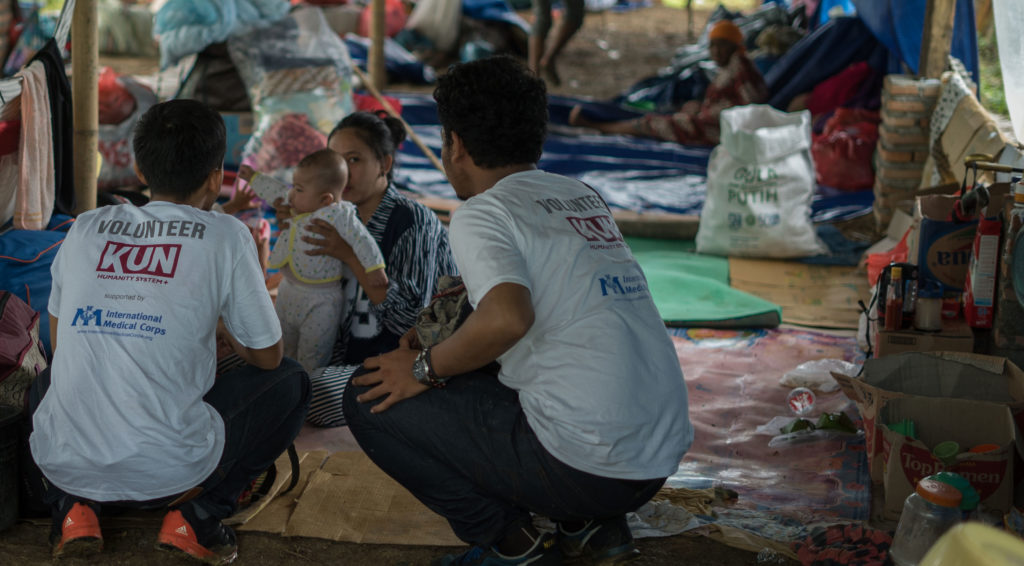
December 2018
Tsunami in Indonesia
A powerful tsunami thought to be related to the eruption of Anak Krakatau arrived onshore at about 9:30 p.m. local time on December 22, causing deaths, injuries and damage on both sides of the Sunda Strait, which runs between the Indonesian islands of Java and Sumatra. Reports indicate that at least 437 people have been killed, more than 14,000 have been injured and more than 33,000 have been displaced, with thousands of buildings damaged. All in all, the Indonesian National Board for Disaster Management, known as the BNBP, estimates that more than 351,000 people have been affected by the disaster.
The volcano continues to erupt, and the government has requested residents around the Sunda Strait to remain 1 kilometer away from the shoreline. Heavy rains and strong waves have slowed search-and-rescue efforts and emergency aid to affected villages.
International Medical Corps is working with a local aid organization to provide emergency healthcare through mobile medical clinics in Banten Province, home to Pandeglang District, which incurred the majority of damage, and accounts for 89% of the total number of displaced people reported. Other urgent needs include medical supplies, temporary shelters, food, household items and clean water. International Medical Corps is prepared to expand our response efforts as needed, including deploying health personnel, additional staff or medical relief materials at the government of Indonesia’s request.
This tsunami comes just three months after a powerful magnitude 7.4 earthquake caused a tsunami that struck Indonesia’s Sulawesi island. With more than 2,000 deaths and 206,000 people displaced by that disaster, International Medical Corps is continuing to provide relief to the families affected by providing water, sanitation and hygiene services, as well as psychosocial support and child protection services.




Frequently Asked Questions
-
What are the significant health concerns resulting from the tsunami?
In addition to immediate emergency medical care needed for those injured by the tsunami, there are significant health concerns that can arise in the aftermath of the destruction. These include:
- Lack of access to clean drinking water
- Medical care for injuries
- Lack of access to chronic medications
- Health risks from contaminated water and food supplies
- Exposure to insects, heat and other environmental hazards
- Outbreak of disease due to poor water, sanitation and hygiene conditions
- Mental health and psychosocial needs due to experiencing loss and/or horrific events
-
What disaster response support can International Medical Corps provide?
During a sudden-onset disaster, International Medical Corps can provide emergency medical relief—volunteer doctors and nurses, medical supplies, mobile medical clinics, and even a modular, portable field hospital when needed. We also work with local First Responders to support and help restore local health systems, which can be offline or significantly impaired after a natural disaster. As a leader in the integration of mental health into general healthcare in humanitarian settings, International Medical Corps also provides guidance and training for First Responders, as well as mental health and psychosocial support for disaster survivors. As a global First Responder with almost 35 years of experience delivering emergency relief in difficult environments, we have the capacity to respond anywhere in the world—fast. We can have a team on the ground in less than 24 hours, and a fully functional field hospital set up in less than 72 hours.
-
How can I help tsunami survivors in Indonesia?
The best way you can help survivors in a disaster is by making a cash donation to an experienced organization that is working in the affected area. Unlike donations of clothing, blankets and other items, cash can meet any need, anywhere—it can buy generators, purchase medical supplies and quickly help get the right kind of assistance to the right place when it’s needed most. Any amount will make a difference, even in a large disaster where need is great.
International Medical Corps also accepts volunteer doctors and nurses to work in the field during a disaster response. You can see our volunteer opportunities here.
-
How can I stay updated about this emergency?
The best way to stay updated is to sign up for our email updates. We’ll keep you informed about the situation on the ground, as well as progress that’s being made.
Photos from the field






